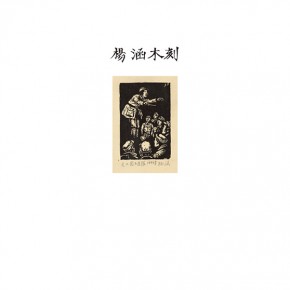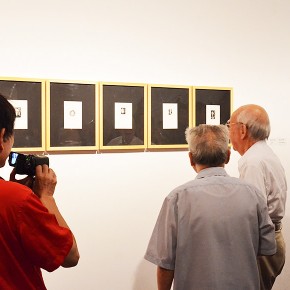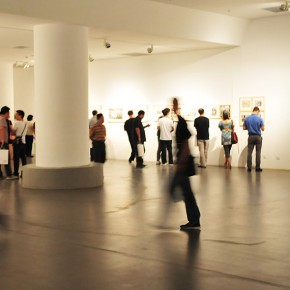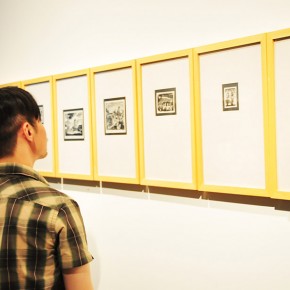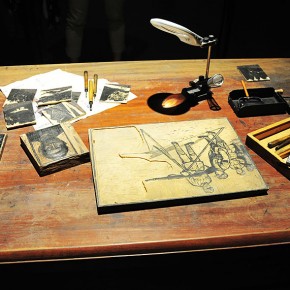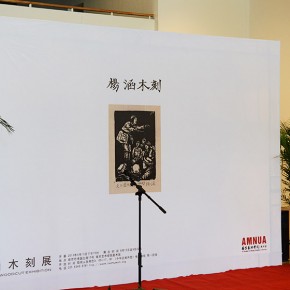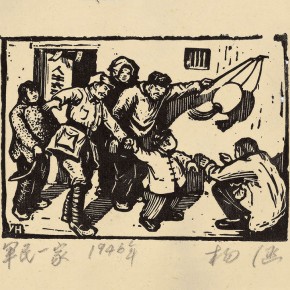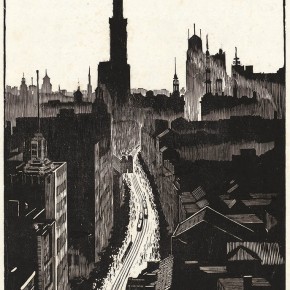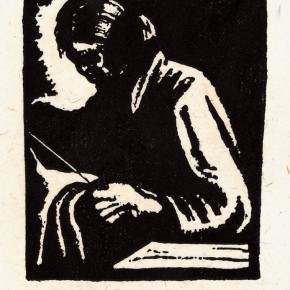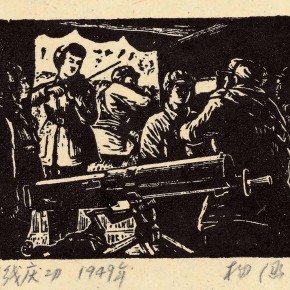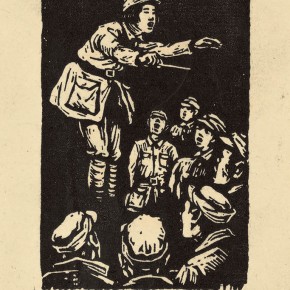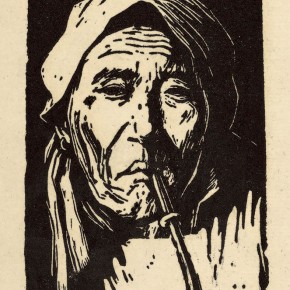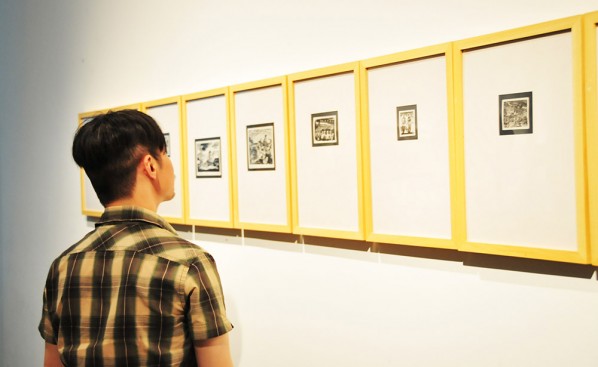
The opening ceremony of “Yang Han Woodcut Exhibition” was held in the Art Museum of Nanjing University of Arts. It features more than 120 works of Yang Han, covering his creative essences in the 6 decades from 1940 to 2012.
Yang Han joined the revolution in 1939, and took part in the Woodcut correspondence Courses of the Wartime Woodcut Study Society in Zhejiang Province, he actively took part in the woodcut movement in the south of Zhejiang Province in 1940. He participated in the New Fourth Army in 1943, and served as the regular woodcut creative staff member of “Central Jiangsu Provincial Newspaper” of the New Fourth Army, editor and associate editor of “Central Jiangsu Illustrated”, editor of “Jianghuai Illustrated” of Central China Military District, etc. In the period of the liberation war, he created military works along with the Eastern China Field Army, serving as the associate editor of “Eastern China Soldiers Illustrated” in Eastern China Military Region, leader of the Military Historical Creative Studio of Nanjing Military Region. In 1958, he retired from the army and served as vice president, deputy editor in chief, and senior editor of Shanghai People’s Fine Arts Publishing House. From decades in an artistic career, along with his masterpieces Yang Han’s important position in the development process of the emerging printmaking in China was established.
Li Xiaoshan, Director of Art Museum of Nanjing University of Arts said in the foreword, “In this exhibition, through many pictures which are different from current life, the spectators see the years of ‘burning passion’, feeling the rustic atmosphere. When the experiences of art and life are integrated, the charm of art generally becomes memory files. We would like to regard Yang’s works as a record of spiritual experiences, which reflects the mental history of the artist - I mean, when an artist’s mental history is close to the changing of the times, whether is there another very precious enlightenment? Yes, art is not a realistic logger, but has an aspiration of self legislation. Mr. Yang was well versed in this, and many of his works are quite particular about the composition, arrangement, shape and use of the knife, representing the high standard of woodcut art at that time. I met Mr. Yang several times, and paid tribute to him when seeing he had never stopped painting, never slacking, extremely sincerely and persistently talking about art. His different ideas and concepts to art are very multi-faceted and diverse artistic manifestations, which is not only an epistemological issue, but also the most basic issue facing the creative practice. Something as the sample given by Mr. Yang, very really conveys the other side of art, which might be placed at the edge and forgotten, while its existence is rational.”
Translated by Chen Peihua and edited by Sue/CAFA ART INFO


